From the mountains to the desert, Wyoming has a wealth of routes for rock climbers of all ability levels. If you’re new to climbing, consider hiring a local guide, not just for safety and to improve your technique, but to learn about the history and geology of the regions you visit.
I am always searching for new spots in Wyoming, and this summer I created a road trip around beginner-friendly climbing, camping and stunning scenery. I was set on exploring the otherworldly rock formations in Vedauwoo, and after connecting with Wyoming Mountain Guides (WMG), I added two days of climbing in Cody to my itinerary. I had never climbed in Wyoming before, so hiring a guide made my trip a breeze, and I can’t speak highly enough about the team at WMG. Their guides were patient and encouraging, and they also educate clients about responsible recreation practices and clean climbing.
CLIMBING RESPONSIBLY
As a seasoned hiker and backpacker, I am already well-versed with Leave No Trace (LNT) Principles, but I wasn’t as familiar with responsible recreation tips specific to rock climbing. These guidelines can help minimize our impact on the environment – and maintain harmony for visitors and locals alike.
1. Plan ahead and prepare.
Research routes before you visit, find backup options in more popular areas, check the weather (in most cases, climbing on wet rock is a no-no), and bring the appropriate gear.
2. Travel and camp on durable surfaces.
Stay on designated trails, and set up camp in established sites only (established sites will show signs of previous use). Remember to stay 200 feet from water sources when selecting a spot to pitch your tent.
3. Dispose of waste properly.
Pack out all trash, including toilet paper. While it’s not required, consider using a Waste Alleviation and Gelling (WAG) bag, especially in sensitive environments like Vedauwoo. Never used one before? Check out this short video from Leave No Trace for more info.
4. Leave what you find.
Beyond resisting the urge to bring rocks or plants home with you, be respectful of archeological sites when climbing. As far as climbing gear, if it’s not your hardware (quick draws, carabiners, etc), leave it behind.
5. Minimize campfire impacts.
No campfires at the crag, and if fires are permitted where you’re camping, please observe burn bans and understand the basics of building and extinguishing a fire.
6. Respect wildlife.
Always stay at least 100 yards away from bears and wolves and at least 25 yards away from all other wildlife. If you have dogs at the crag, please keep them leashed, so as not to disturb wildlife.
7. Be considerate of others.
Clear removable protection when you’re done with a route, and keep your gear tidy at the crag so other climbers don’t have to navigate around a mess of ropes, bags and clothing. Be aware of noise levels that might impede climber/belayer communication, and consider leaving portable speakers at home. Finally, be mindful of climbing beyond your ability level if it impacts how long you take on a route. Hogging a route is not polite, so if you’re with a larger group, consider taking a break to give other climbers a turn.
For more responsible recreation tips, please visit the WY Responsibly page.
TRAD CLIMBING IN VEDAUWOO
Vedauwoo Recreation Area is tucked in the southeastern corner of Wyoming, just a 25-minute drive from the city of Laramie and two hours from Denver International Airport. Vedauwoo (pronounced VEE-da-voo) is derived from the Arapaho word “bito’o’wu” meaning “earth-born,” and from Sherman granite rock formations to aspen groves, this landscape is worth visiting even if you don’t plan to climb. Moose frequent the area, and birders will rejoice at the number of avian species in this diverse habitat, which sits at an elevation of 8,200 feet.
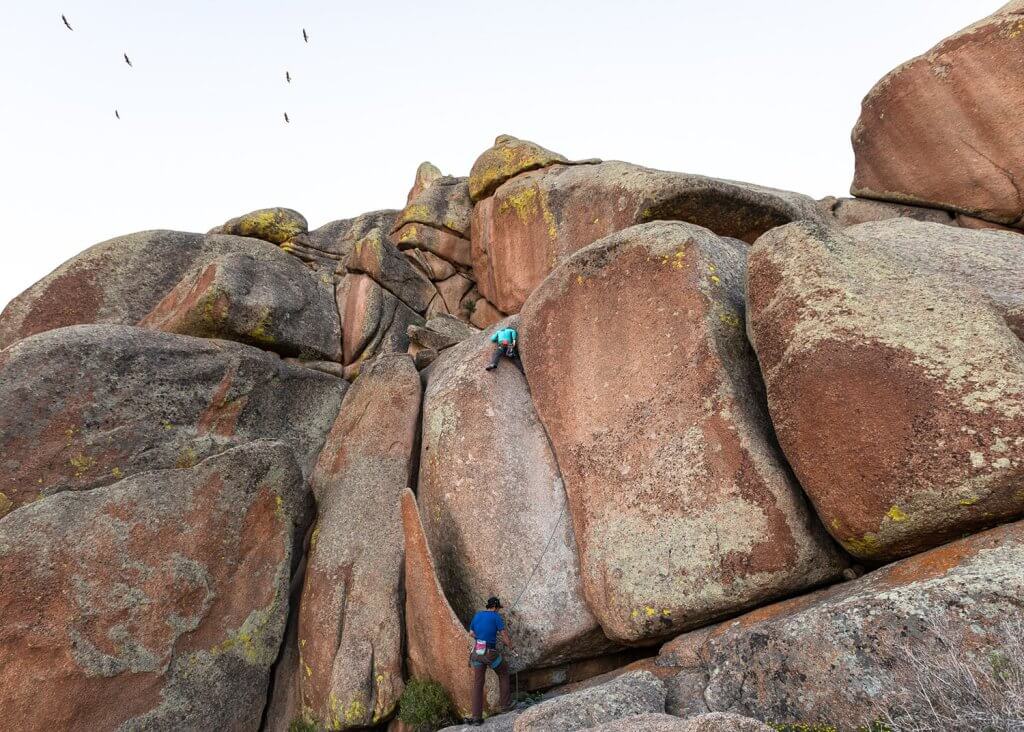
Vedauwoo is also home to the best crack climbing in Wyoming (and the best off-width climbing in the nation), making it an excellent place to learn traditional climbing, aka trad climbing. I dabbled with crack climbing last summer, so I was familiar with hand jamming and foot placement, but I knew nothing about placing cams and setting anchors. I’d like to learn how to lead climb eventually, so going with a rock climbing guide and taking the “Intro to Trad” course was exactly what I was looking for. Not only did I get a refresher on how to belay and navigate cracks, but my guide created a mock anchor just five feet above the ground, and we reviewed setting and cleaning it. While I will require more training before I attempt to lead a climb sans guide, this was a fantastic introduction to the basics.
Crack climbing is a bit more physical than sport climbing (even with pants and gloves, you’ll end up with some scrapes and bruises), but the more I do it, the more I enjoy it. Vedauwoo has hundreds of routes, most of which are single pitch, though there are some multi-pitch options as well. Most of the approaches are short and flat, and accessible from camp.
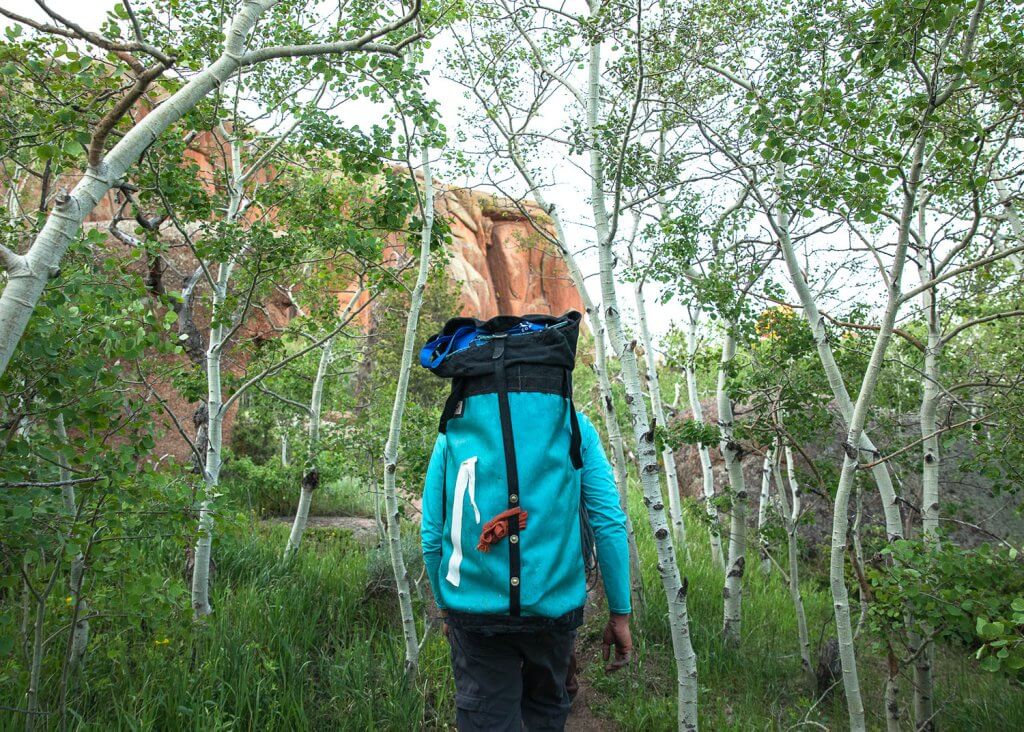
The Vedauwoo Campground has 28 numbered sites available on a first-come, first-serve basis for $10 per night, and there are also free, dispersed campsites in the area. While they are not numbered, they are fairly obvious, and located on the spurs along Vedauwoo Glen Road. Just 30 minutes up the road is Curt Gowdy State Park, which has a total of 178 campsites that can be booked online. Laramie has plenty of lodging options for those who prefer to stay in a hotel, and whether you’re looking for a latte, a sandwich or a local craft brew, Coal Creek Coffee and TAP has all kinds of delicious menu items.
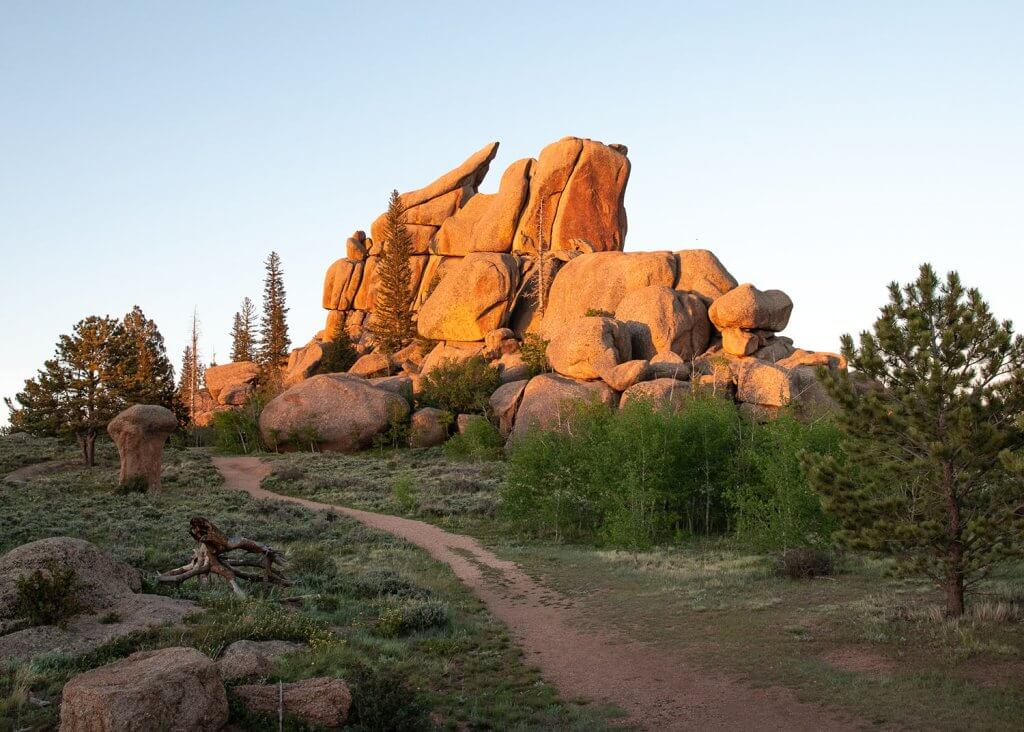
SPORT CLIMBING AT THE CODY BRIDGE BANDS
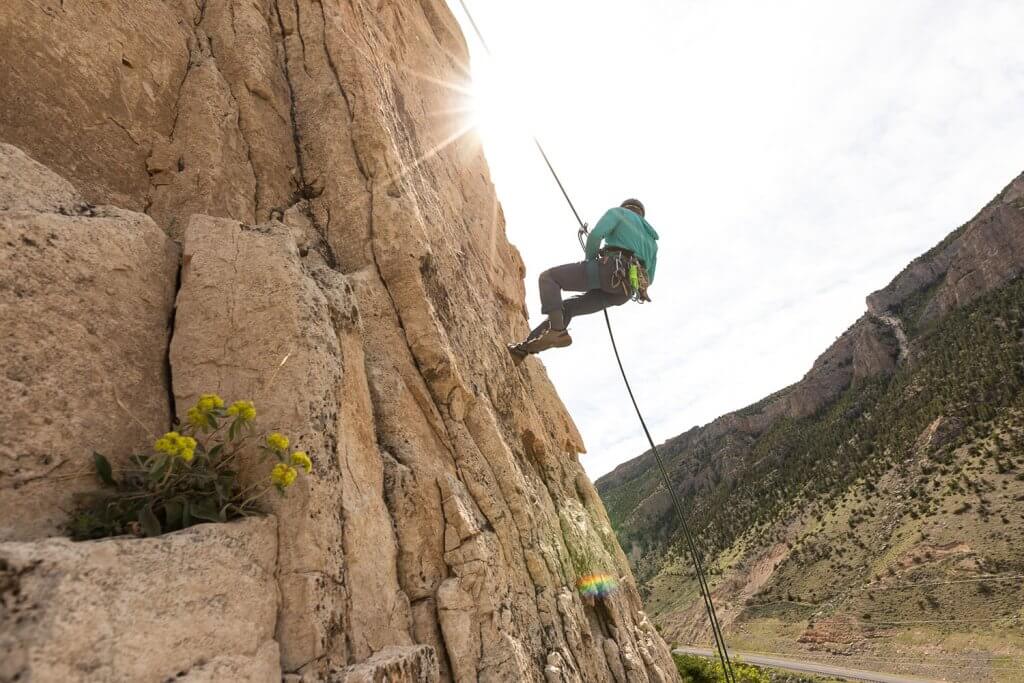
Cody is a six-hour drive from Vedauwoo, and it’s best known as one of several gateways to Yellowstone National Park. The city has classic wild west charm, and the canyons around the nearby Shoshone River provide jaw-dropping roadside scenery. To the east, wild horses can be found near McCullough Peaks, and to the west, the Buffalo Bill Reservoir offers boating and fishing, among other activities. Cody is also surrounded by a handful of climbing areas just five miles beyond the city limits, including the Bridge Bands, which are mostly single-pitch sport climbs, and the Cedar Mountain Boulders.
The East Bridge Bands are home to several beginner-friendly routes with very short approaches (read: 15 minutes max), and when we took a break around noon, the area was still mostly in the shade. After admiring the view of the Shoshone River below us, we didn’t even have to move our gear before going up the next route, which was about 25 feet away. The dolomite walls have plenty of great holds, and we didn’t see anyone else there all day. As a beginner, sometimes it’s a bit daunting to climb in front of strangers, so I appreciated how uncrowded it was. Limited parking is available on either side of the Hayden Arch Bridge, though you’re not likely to be battling anyone for a spot.
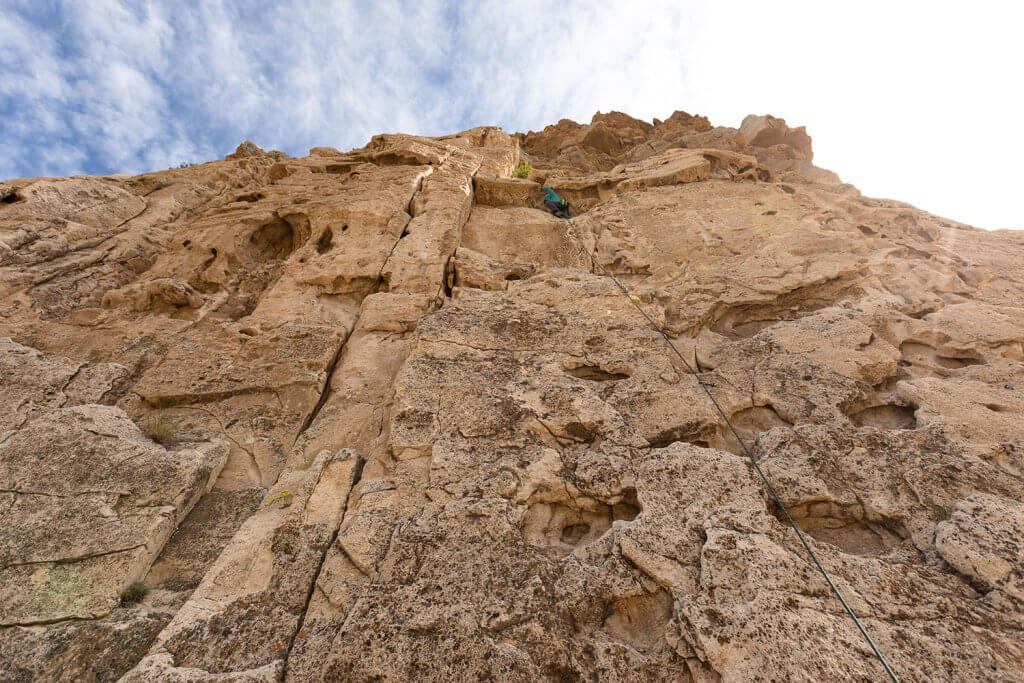
Buffalo Bill State Park has two campgrounds with nearly 100 sites total, all of which can be booked online. As the name indicates, the Lake Shore Campground sits right on the reservoir, while the North Fork Campground is another five miles west on U.S. Highway 16, close to the North Fork of the Shoshone River. Some sites have hookups and can accommodate RVs, and tent campers are allowed to camp at any site in the park.
Cody has over two dozen hotels, and a local favorite is the Scout Inn, a newly remodeled property with 30 spacious guest rooms, plus on-site coin-operated laundry. The Scout Inn is walking distance from a number of top-rated restaurants, including the Cody Steak House, Fat Racks BBQ and Beta Coffeehouse. If you’re craving a crepe, be sure to stop by The Station, which has tasty sweet and savory options, plus smoothies and coffee.
SPORT CLIMBING ON THE BEAR TOWERS
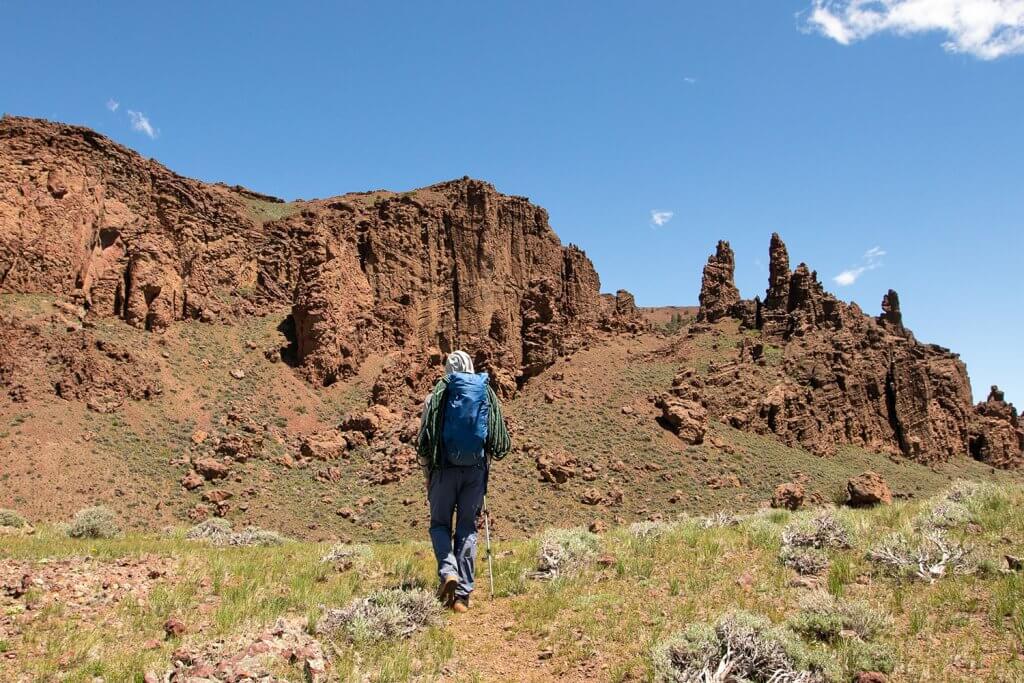
Less than 20 miles west of Cody is Wapiti, which has a handful of access points to the Shoshone National Forest. The Shoshone National Forest covers 2.4 million acres along the borders of Yellowstone and Grand Teton National Parks, and includes the breathtaking Beartooth Highway, the highest-elevation highway in the Northern Rockies.
The Bear Towers are a relatively new climbing spot located a mile east of Wapiti, and accessible via the Four Bear Trailhead. The approach is a four-mile out-and-back trail with minimal elevation gain, and it meanders along wildflower-filled meadows with views of badlands in the distance. After hiking for about twenty minutes, you’ll get your first glimpse of the breccia spires, which are a mix of mud and highly ferrous volcanic rock. WMG have bolted a handful of routes, ranging from easy, single-pitch climbs to a 5.8 two-pitch climb on the Titan, one of the tallest towers in the area. While these are unique and photogenic geological features, the rock can be chossy in spots, so this is definitely a more adventurous climbing experience. My rock climbing guide explained what to look for in holds (and what to avoid), so having his expertise made me feel much more confident. And just like the Bridge Bands, we had the whole area to ourselves.
Please note: this is bear country, so be sure to make plenty of noise on the trail, carry bear spray and store food properly (if it’s not within arm’s reach, it either needs to be in a bear can or bear bag).
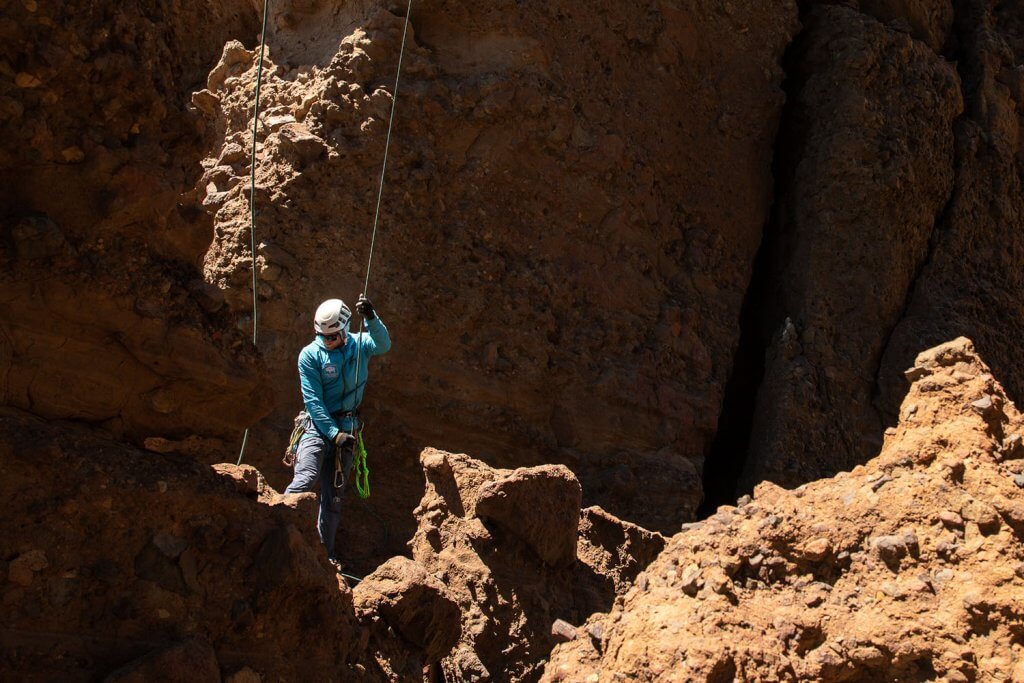
While the North Fork Campground at Buffalo Bill State Park is five miles from the trailhead, there are also several U.S. Forest Service Campgrounds ten miles to the west of the trailhead. The Wapiti Campground has reservable sites available online via recreation.gov, and the Elk Fork Campground has sites available on a first-come, first-serve basis. Nearby lodging options include Yellowstone Inn and RV Park, Wapiti Lodge and the Trail Shop Inn and Restaurant, all of which have on-site restaurants open for dinner.
Find more places to climb in Wyoming.